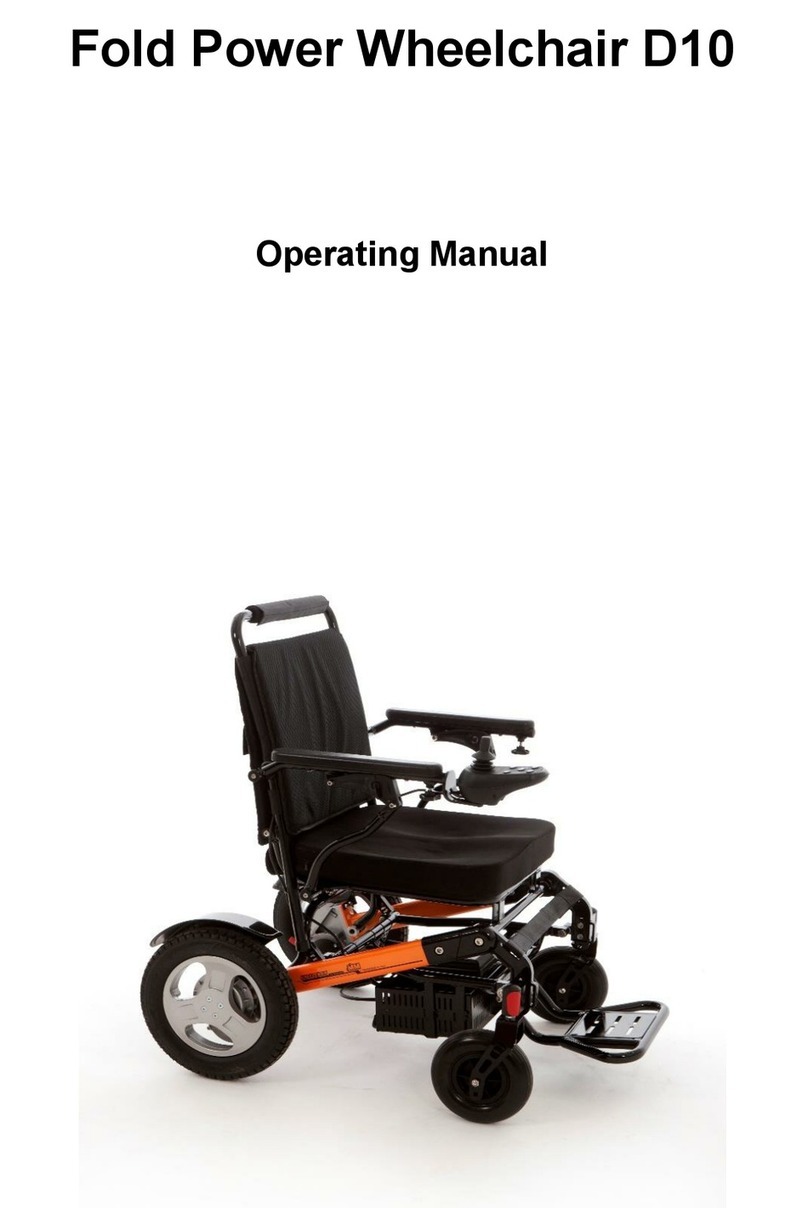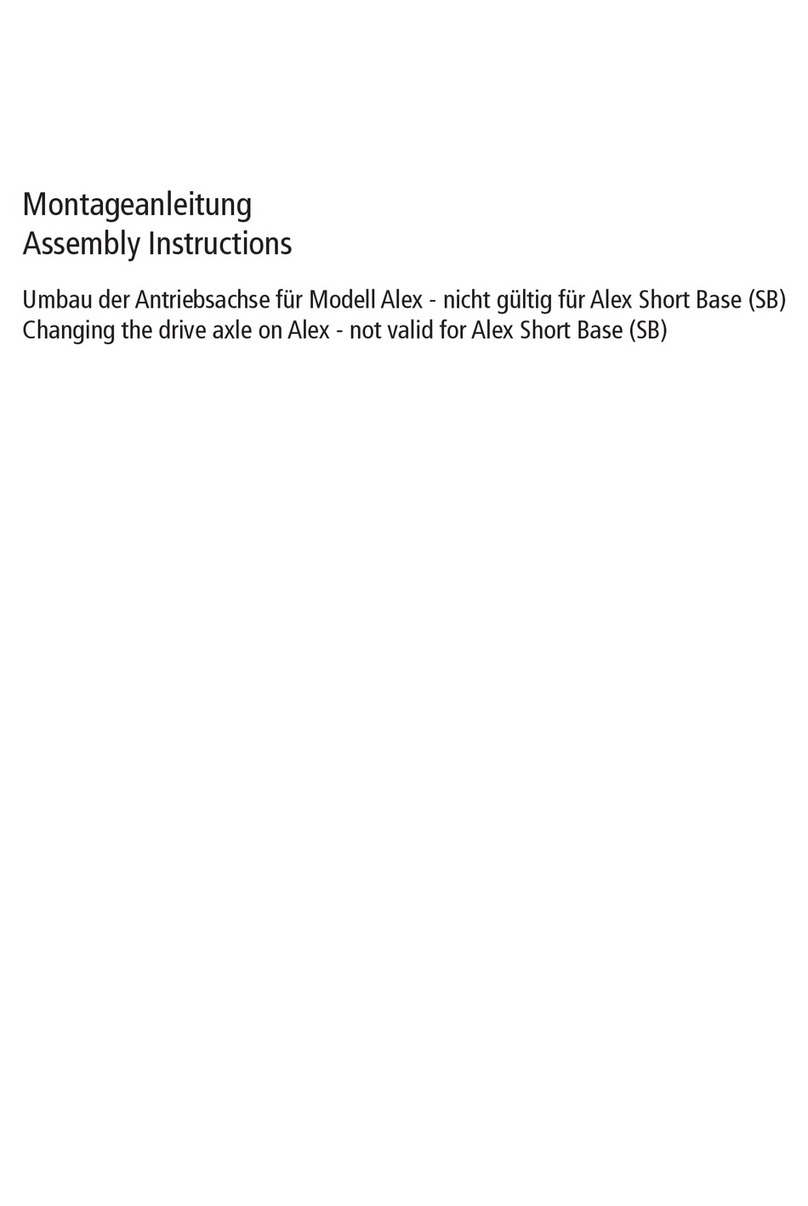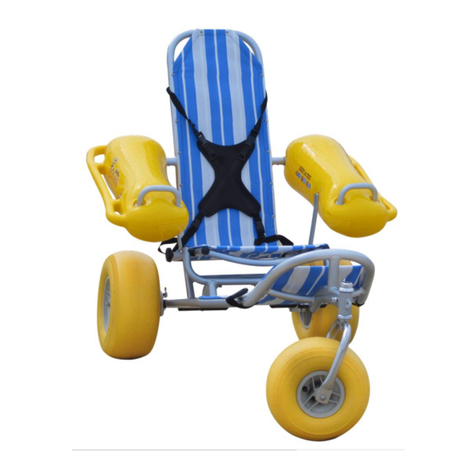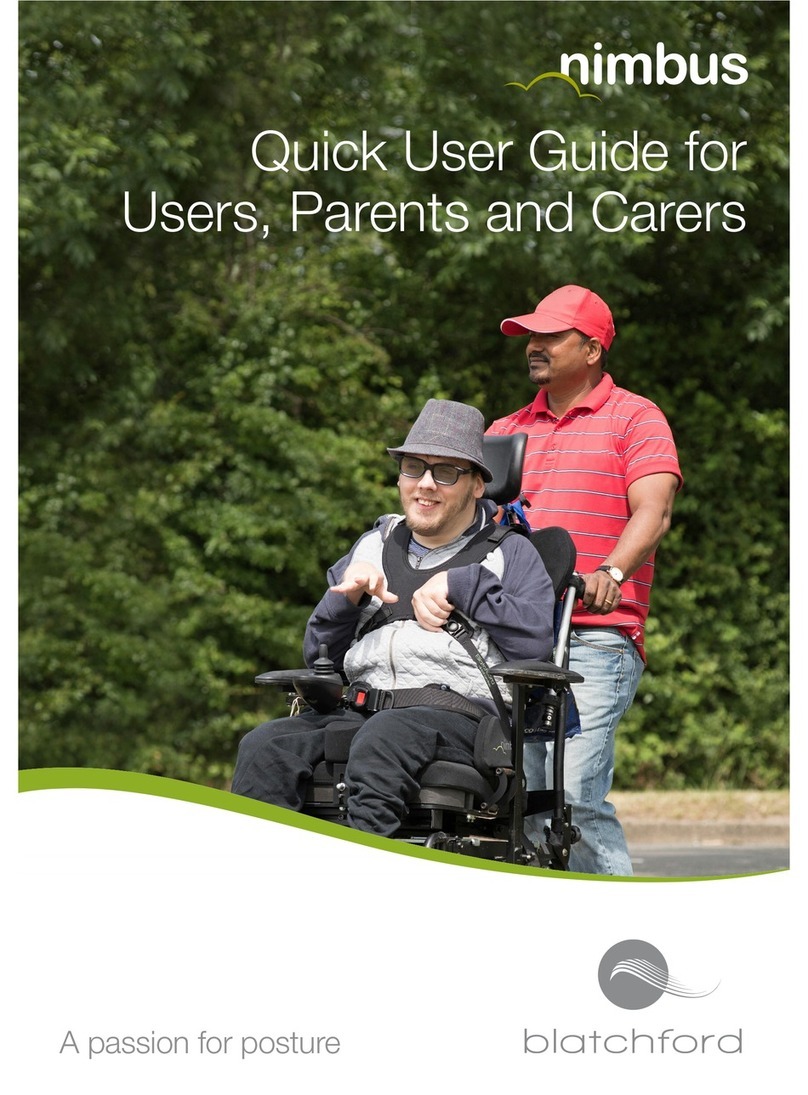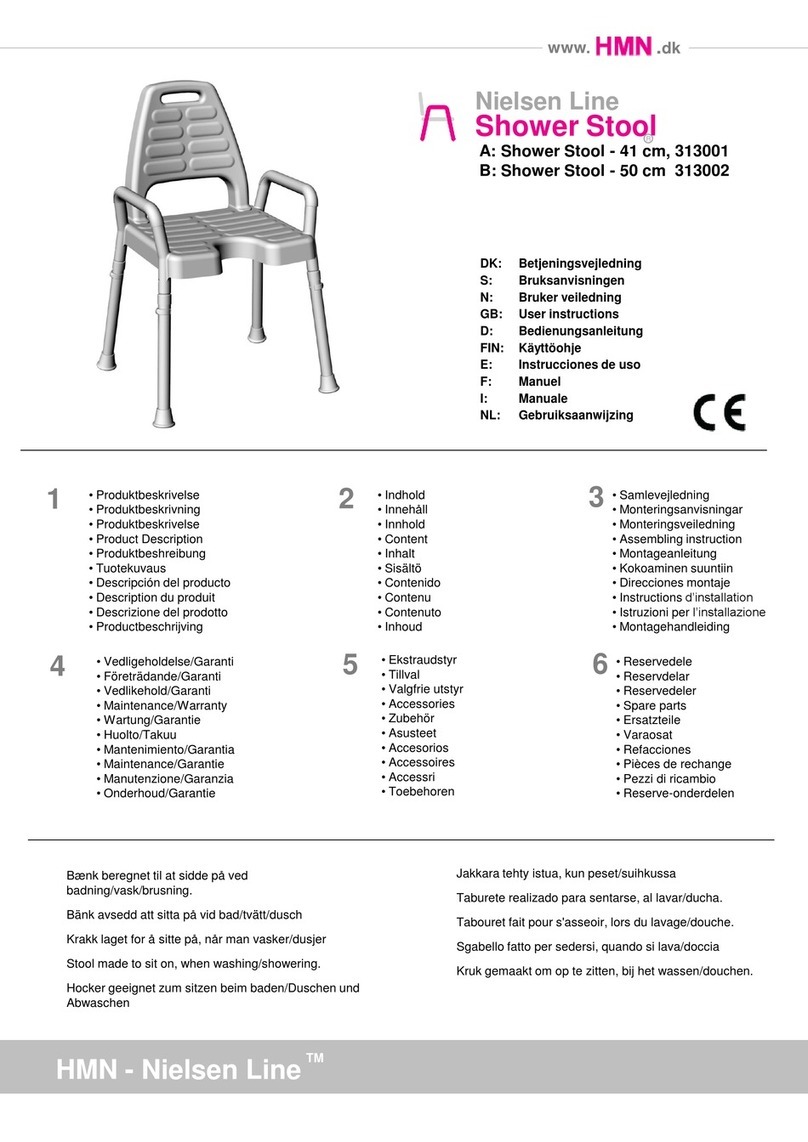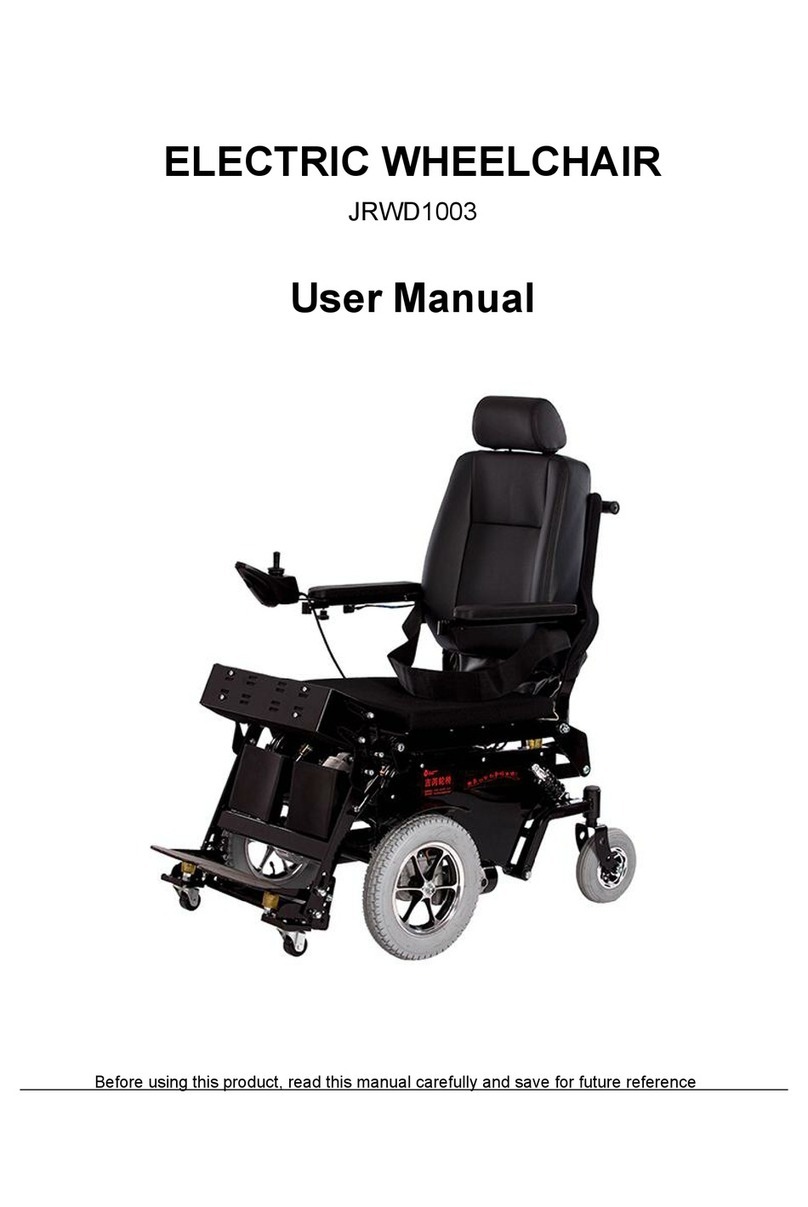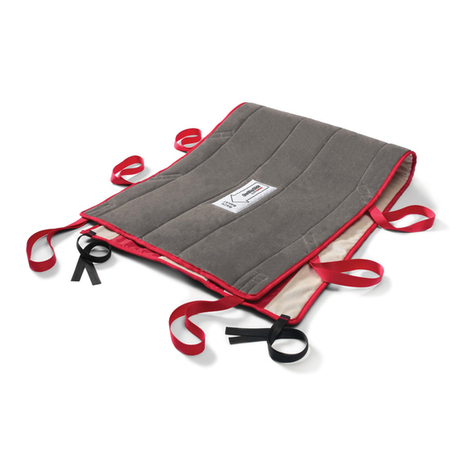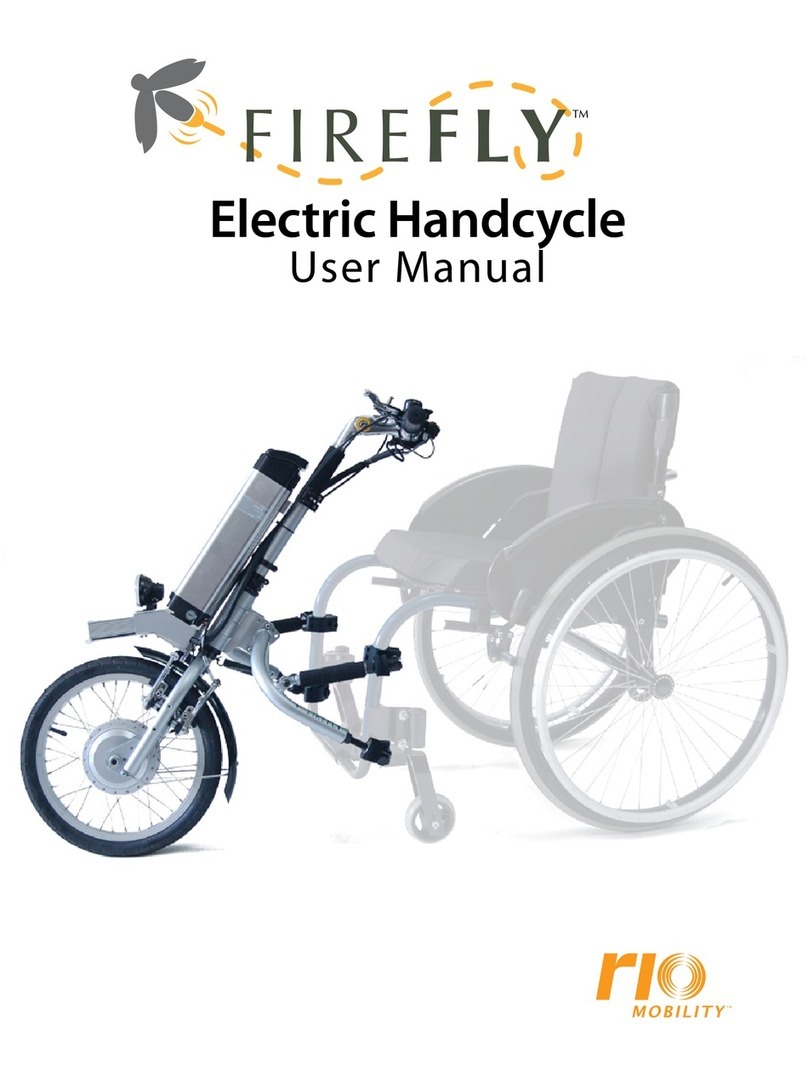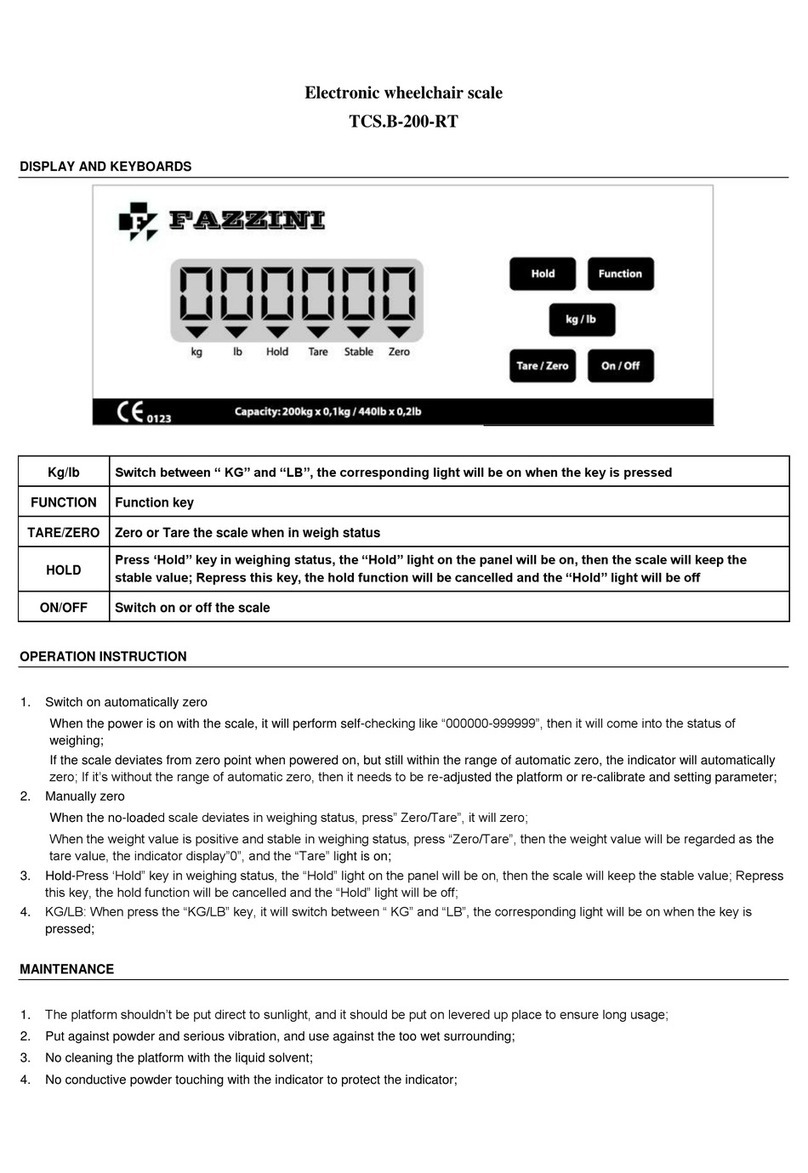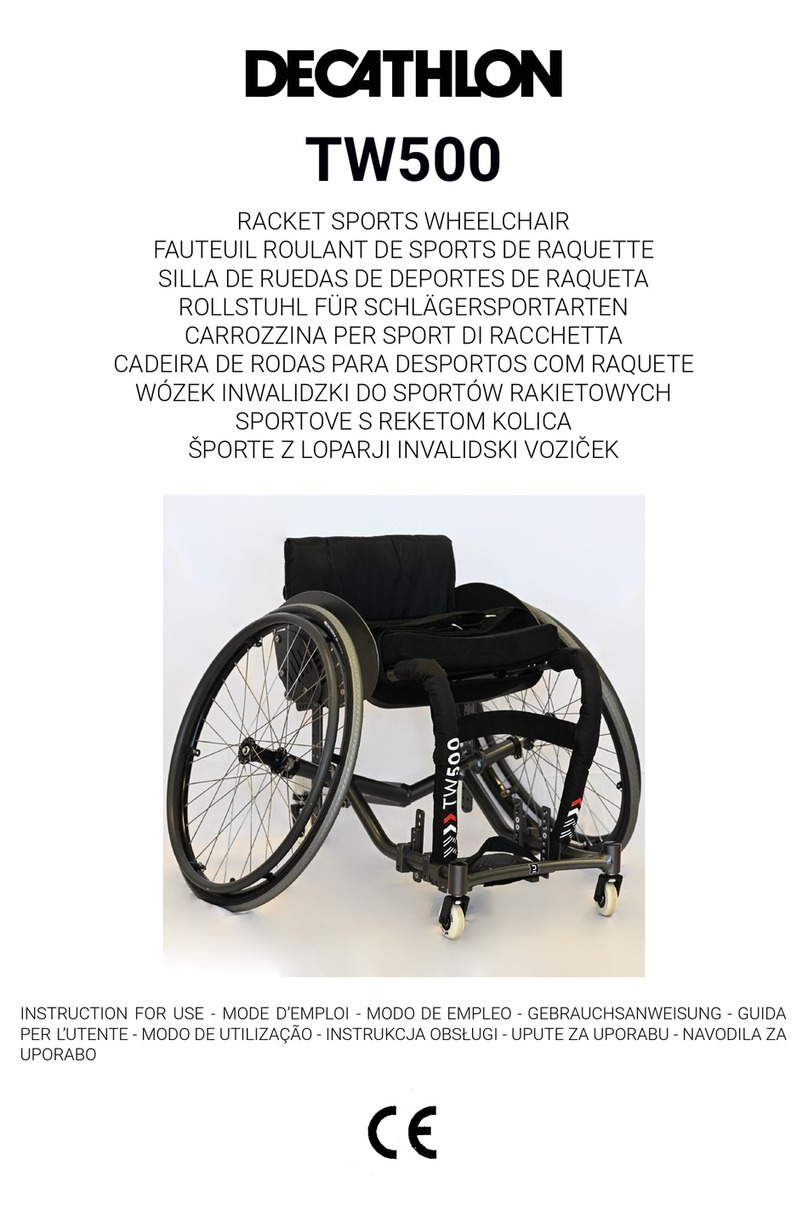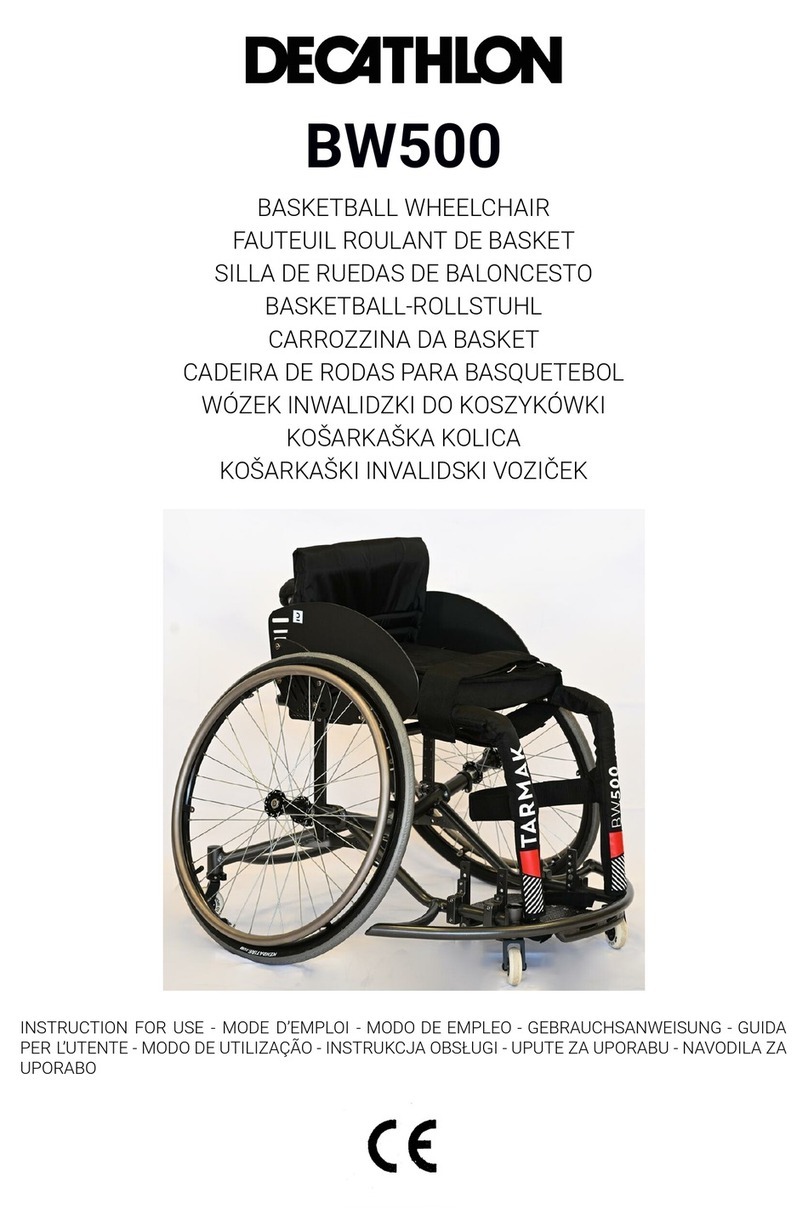● Check the tyre pressures. On the side of each wheel cover, you’ll find the recommended tyre pressure.
A deflated tyre compromises the efficiency of the brakes and the fluidity of the wheelchair’s
movements.
● Check the efficiency of the quick removal devices [paragraph 6.3], clean them, and if necessary, oil the
axles and dowels with a lile grease to ensure that the wheels can be simply removed and replaced.
● Check the effecveness of the brakes.
Each quarter:
● Ensure that the rear wheel bearing screws are securely fastened.
● Check for wear on the front wheels, which may alter the rear seat of the wheelchair if significantly
worn. In this case, proceed with replacing the wheels [par. 6.2].
● Check the bearings on the front and rear wheels, and on the fork rotaon. In this case, replace the
bearings [par. 6.2].
● Grease the mobile parts, such as the quick removal axles of the wheels and the guides for the wheels.
We recommend using silicon oil as a grease, as it's effecve and non-staining.
6.1 Replacing the tyre and air chamber
Disassembling the tyre and air chamber
● Deflate the tyre
● Install a special lever between the circle and the shoulder of the tyre, so that when the lever is lted,
the side of the wheel comes out (fig. 1 and 2)
● Install another lever 100 mm from the previous point and repeat the operaon (fig. 3)
● Slide the two levers around the whole circle to release the enre tyre.
● Remove the air chamber, starng with the side opposite the inflaon valve (fig. 4)
● Once the air chamber has been removed, you can easily remove the tyre to replace either or both of
them.
Assembling the air chamber and tyre
● Remove the air chamber (deflated) in the tyre (fig. 5).
● Insert the air chamber inflaon valve into the whole intended for this purpose, located on the circle.
● Around the whole circle, install the tyre, taking note of the direcon of the tyre, which indicates
whether it's the right or le drive wheel.
● Install the opposite shoulder over the tyre, starng from the point where the valve is, moving round in
both direcons.
● Insert the final part of the shoulder with the help of the levers intended for this, reversing the
instrucons shown in Fig. 3, Fig. 2, and Fig. 1.
● Inflate the tyre to the pressure indicated on its side.
FIG. 1 FIG. 2 FIG. 3 FIG. 4 FIG. 5
6.2 Replacing the castors and bearings
Wheel replacement (Fig. 6)
● Unscrew and remove the “4” screws.
● Remove axle “3” from its seat.
● You can freely remove the wheel.





















